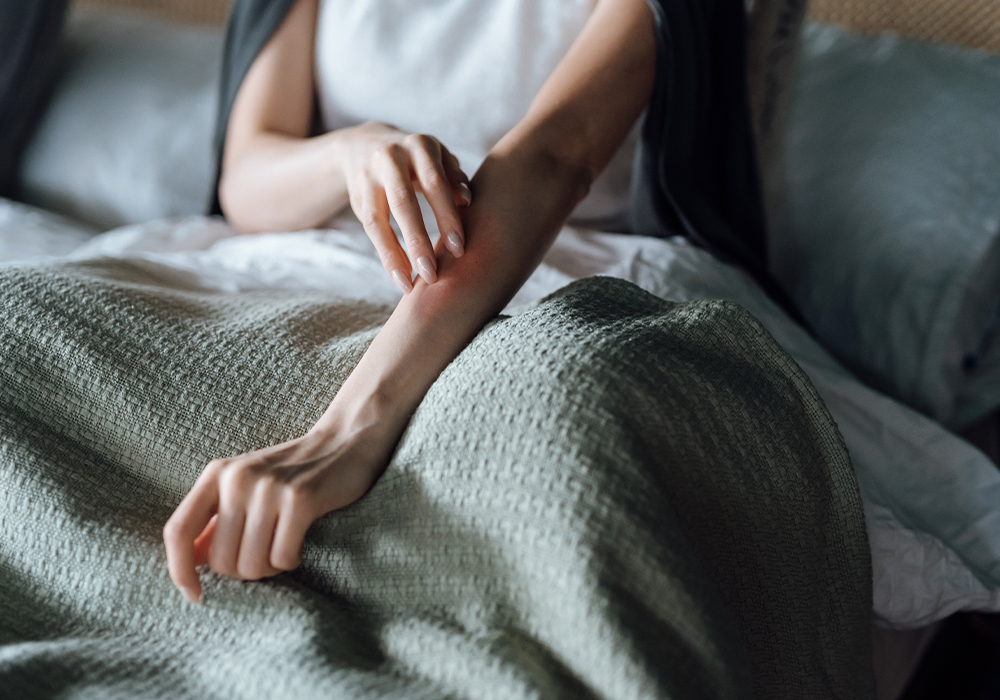
What Skin Experts Want You to Know About the Monkeypox Rash and Scarring
According to the Centers for Disease Control and Prevention (CDC), the monkeypox virus has reached all 50 states. Currently, there are 15,433 reported cases of monkeypox in the United States, with New York with the most at 3,000 cases, followed by California, Florida, Texas and Georgia. While the virus does not spread as quickly as other viruses or COVID-19, it’s still a growing concern. Here, skin experts break down what to know about the skin-related symptoms that accompany the virus.
When Symptoms Start
Bloomfield Hills, MI dermatologist Linda C. Honet, MD says the important feature about monkeypox rash is that it typically appears one to three days after the onset of systemic symptoms including fever, chills, fatigue, myalgias, achiness, and/or headache. “The rash can be as innocuous as a solitary pimple-like red spot or bump, but could also be several to numerous in number,” she explains. “Often the rash appears on the face first and can rapidly spread to other parts of the body.”
What It Looks Like
According to New York dermatologist Dr. Karan Lal monkeypox can present with one or few fluid-filled blisters in and around the mouth and/or genitals. “It may also present with ulcers in these locations. Often the blisters or ulcers are painful, but they may be asymptomatic as well. They will usually present all at the same time and go through phases before they scab over. People with weakened immune systems may develop many blisters and usually have more severe illness along with fever, chills and swollen lymph nodes.”
How It Spreads
The CDC has warned that monkeypox spreads through sexual contact and it can also be spread from respiratory droplets and contact from contaminated fomites. “These are objects that are likely to carry infection, like clothing, utensils and furniture, which can carry the virus,” says Dr. Honet. “The rash or sore of syphilis or gonorrhea can appear similar. It may also be mistaken for chicken pox, but chicken pox is quite itchy, where the skin lesions of monkeypox is noticeably painful.”
What to Use on Skin
“You can use petroleum jelly or topical antibiotic ointments such as mupirocin,” advises Dr. Lal. “Moist wounds heal faster than dry wounds. Using an antibiotic ointment can reduce the risk of superinfection of the monkeypox lesions.”
Lesions may leave behind “pox scars” similar to what chicken pox and shingles scars look like. “The best way to prevent scarring is avoid getting monkeypox,” he adds. “If you have open lesions you can consider silicone dressings which can reduce the risk of scarring. Using sunscreen after the skin has healed will help the scars mature better and prevent poor wound healing from sun damage.”
Treating Pox Scars
Dr. Lal says early treatment with lasers and energy-based devices, about six weeks after lesions heal, will be the most beneficial: “Scars can also be treated with fillers to fill the scars at least four weeks after the lesions heal.” Most importantly, treatment of scars cannot be done until the skin has healed and you’ve gotten an OK from your primary care physician.
Find a Doctor
Find a NewBeauty “Top Beauty Doctor” Near you